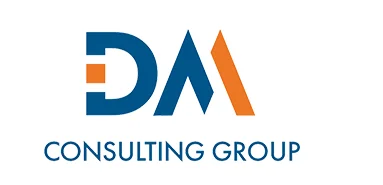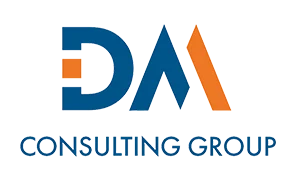
October 21, 2025
As architectural and engineering (A/E) firms grow and mature, firm owners will eventually face the critical decision on how to successfully transition ownership. Without a clear and proactive plan for ownership transition, firms will likely not reach their full potential, and the value will be limited. Transition strategies generally fall into two categories: internal transfers to key employees or external transitions through mergers and acquisitions (M&A). This article explored both options, highlighting the benefits and challenges of each, and examines why some firms ultimately opt for an external transition.
Internal Ownership Transition
An internal transition enables current owners to gradually exit the firm by transferring shares to existing key employees over time. This phased approach allows owners to maintain control and continue to receive salary and benefits from the firm while also developing and retaining key employees. Common examples of internal transition strategies include cross-purchases, redemptions, stock bonuses, deferred compensation and employee stock ownership plans (ESOPs).
Pros and cons of internal transition plans include the following:
Pros
- Continuation of the firm
- Access to a pool of buyers already in the firm
- Continuance of salary and benefits
- Ongoing control until retirement
Cons
- Possible lack of future owners
- Ownership candidates may be more risk-averse
- Funding through current operations
External Ownership Transition
An external transition involves selling the firm to an owner or entity outside of your firm, such as through a merger, stock acquisition, asset acquisition, or even liquidation. These transitions are often more immediate, with the majority or all of the ownership being transferred at once, as opposed to the gradual sale of shares over an extended time period.
External sales can be made for various reasons, such as a lack of an internal ownership transition plan, an absence of internal buyers or potential future owners, a desire to achieve maximum value in the sale of the company and the seller being unwilling to hold a note receivable, allowing potential internal buyers. External sales can give a company a very different path and often lead to the owner having a smaller role in the combined entity after the sale, depending on the terms negotiated in the deal.
Pros and cons of external transition plans include the following:
Pros
- Transfer most likely for maximum price
- Greater liquidity and less risk for existing owners
- Short time frame for sale
- Add new talent or other aspects to the company
Cons
- Difficulty of finding a buyer with the right fit
- Confidentiality
- Loss of control and identity
- Staff and client retention
Why Firms Make Acquisitions
From a buyer’s perspective, acquisitions can open new opportunities for A/E firms, allowing them to expand into new geographic regions, obtain new clients, acquire new areas of expertise, obtain additional employees and possibly even obtain new potential shareholders that can enter into their own internal ownership transition plan. An acquisition is a great way for firms to expand their operations rapidly and artificially grow their company from the outside while still maintaining their culture, leadership and operations.
Trends in Mergers and Acquisitions for A/E Firms
The pace of M&A in the A/E industry has never been higher as firms continue to seek new opportunities for growth. From 2023 to 2024, acquisition activity rose significantly, and the momentum has continued into 2025. A tight labor market in the A/E industry has also led larger firms to pursue acquisitions as a way to build their staff, while private equity investment in the industry continues to escalate.
Valuation Method for M&A Transactions
While internal transitions often use a variety of valuation techniques, M&A deals typically value A/E firms using a multiple of EBITDA (Earnings Before Interest, Taxes, Depreciation and Amortization). The multiple of EBITDA will often vary based on the consistency of earnings and the size of the selling firm. Smaller firms that are more dependent on fewer employees and key clients will generally trade at lower multiples in the range of three to five times EBITDA, while larger firms that have more growth potential may trade at multiples of six, seven or even eight times EBITDA.
Structuring the Sale
In addition to negotiating the sales price, it will be critical to establish a structure for the transaction that will provide the most benefit to both the buyer and seller. Transactions can either be structured as stock sales or asset sales, with asset sales generally providing better tax benefits to the buyer. Some transactions are mainly paid with cash or stock at closing, while future payments under term note agreements are also common. In addition, the parties will need to determine which assets and liabilities will transfer, and which will remain with the seller. There will often be an adjustment based on the level of working capital at closing, and earnout provisions might provide an opportunity for additional value.
For smaller firms, ongoing salary, benefits, and the seller’s role post-sale are often integral to the overall deal and should be carefully negotiated. Exercising care in negotiating the structure of the transaction can unlock additional value for the seller and can reduce surprises that can jeopardize the transaction.
Which Option Is Right for You’re A/E Firm?
Owners will often look to transfer internally before considering an M&A process for their A/E firm. With internal transitions, owners are often able to continue their involvement with the firm even as they transfer their shares to others, and the firm tends to operate similarly to how it has in the past. External transfers tend to provide more money in the sale, and often happen on a much shorter time frame than internal transfers.
In an external sale, finding a buyer that is the right fit for your firm can be more important than the price you are able to obtain for your sale. Beyond what the numbers dictate, external buyers will look at the culture of a firm and consider the likelihood of client and employee retention. In addition, the level of continuing involvement by the selling owners will also be an essential consideration.
There is not one specific factor that will dictate the best outcome. Weighing each pro and con of internal and external transfers is crucial to making the right decision for your A/E firm. When considering an external sale, finding the right advisors to be in your corner will help you establish and achieve your goals.
Contributing Author: Victor W. Vaccaro, Jr., CPA/ABV, CFF, is a principal at DM Consulting Group, with 35 years of experience providing valuation, accounting and consulting services for architectural and engineering firms. If you have any questions or would like additional information on this topic, contact Vic at vvaccaro@dmconsulting.com.

